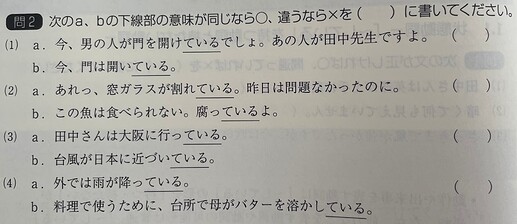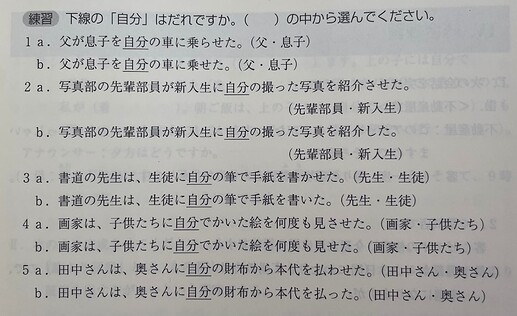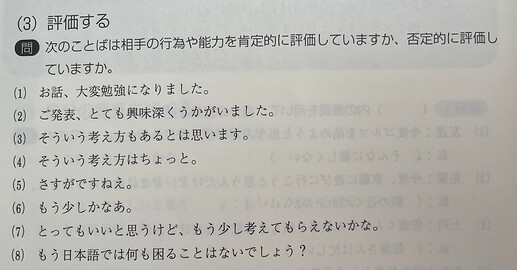I agree with this. I think grammar is more or less what they are selling, and I definitely think I got my money’s worth, but at the same time I feel like they’re losing focus and are just overextended now.
Bunpro is good for grammar mostly because there isn’t much competition. There are other resources of course, but there isn’t really anything that tries to make it easy to study grammar using an SRS. So bunpro has been immensely helpful for me because I like studying in that way and it works for me. But if I take a step back and compare bunpro to all the other resources I use, it feels like it’s maybe 30% of the grammar learning tool I actually want.
The most obvious example is probably that bunpro doesn’t even have content for all the basic conjugations. So when people ask for a way to practice basic conjugations I tend to recommend a phone app called Japanese Conjugation City. And to be honest, if only the content was expanded to cover more conjugations, it would still not be good. For example the basic う - Verbs grammar point has a table that explains how it works for all the ending kana, but it only tests five of them and it doesn’t test them independently. This is not suitable to learn or practice conjugations. It’s something that an SRS is actually good for, but the way bunpro is set up for grammar points isn’t the way to do it. For example, the app I mentioned can be configured to test conjugations on words based on how often the user gets a word from the database wrong, so if a user specifically has trouble with one of the possible endings, the app will catch that. Bunpro isn’t able to do that. If we’re talking about features that should be in a grammar learning tool, basically imitating this one app would take the top spot on my list, way above “vocabulary”.
Another thing that just feels like it wasn’t thought through properly is the move from an initial focus on bunpro’s own order toward marketing learning paths or decks. I think it’s immensely difficult to organise the content of an SRS so that it works for many different paths because it becomes nearly impossible to maintain a “+1” standard for grammar points where each successive point one learns only introduces exactly one thing. Bunpro completely fails with this, and for an SRS it’s catastrophic if cards end up testing more than one thing because the system can’t accurately evaluate what part the user actually didn’t understand. Being able to be usable by learners who already use a text book may be necessary to be able to get customers, but quality wise this was not an improvement, and if bunpro is supposed to overextend even more and become more of a one stop shop it was counterproductive and it would have been better to improve the experience for learners using bunpro’s path.
For slightly more advanced topics I’ve sometimes found that just learning what a pattern means isn’t really good enough on its own to be able to disambiguate different uses of similar structures. I think there are more exercises that work in a SRS than just filling out the blank, for example, evaluating sentences and being questioned on the meaning. I’ll just post some random examples from workbooks I have. These are not meant as things I would have expected bunpro to do, just examples for a direction I could see it being developed if it was to become a better grammar resource.
This one from a workbook called 日本語文法演習 時間を表す表現 asks whether -ている is used in the same way in two sentences or not (state or progressive).
This one from 日本語文法演習 自動詞・他動詞、使役、受身 asks which of two persons 自分 refers to in a sentence to drill a point related to the use of passive.
This one from 日本語文法演習 敬語を中心とした対人関係の表現 asks whether a sentence expresses disagreement:
That last one is a bit of a stretch since it’s just a bunch of different expressions, but let’s say there was a grammar point for ちょっと or 大丈夫, that kind of grammar point could use this style of question. And in general these exercises might seem like a stretch anyway, just because bunpro only does SRS and I’m already limiting these examples to things that work on SRS cards. But if I was asked what I’d want in a grammar resource, the answer is probably… not just SRS. And especially not more SRS for vocabulary.
But we did get vocabulary. To me this feels like a complete break with the current user base of bunpro. Bunpro started out as, and pretty much still is, a supplementary grammar resource for learners who have already invested some time into Japanese. It’s not currently suitable for complete beginners because there is no direction. In other words, it’s for learners who by and large already have a vocabulary tool of choice. Learners who may have gotten used to incredible flexibility of Anki, or maybe the fairly efficient handwriting reviews that Skritter does, or maybe they just have their own favourite SRS tool because the app stores are full of them. Bunpro’s vocabulary feature does nothing that these tools don’t do better, and probably cheaper in many cases.
I don’t buy into the “the team can do more than one thing at a time” argument either when it comes to vocabulary. That’s technically true, for example, taking resources off of the vocabulary content will not necessarily magically remove the mistakes in the new grammar explanations. But this isn’t just about implementing it. The presence of vocabulary will continually be a burden in that it has to be taken into account for every other development of bunpro as well.
For example, the new textbook based decks have both grammar and vocabulary in the order that they appear in the textbook. So now the JLTP level based decks look bad in comparison because there’s no way to study N5 vocabulary in the order that it appears in the grammar points when studying the N5 grammar deck.
Vocabulary is also being linked from grammar points now, but oftentimes that just makes the experience worse. When I started using bunpro, I had the ability to click on words to toggle furigana for that word specifically and I thought it was the greatest thing because it elegantly addressed the fact that we don’t learn kanji and grammar in sync. Now there are words that have a vocabulary entry where this consequently doesn’t work anymore (especially on phone). And sometimes the vocabulary links aren’t even useful, for example there is a vocabulary entry for さん but not for おばあさん, so the 厳しいおばあさん from the ったら grammar point has her さん linked to a vocabulary entry that’s probably counterproductive because おばあ by itself isn’t really a word anymore in modern Japanese.
(Speaking of grandmothers, there is a card for お祖母さん which for some reason doesn’t come up when spelled in kana or as お婆さん. But also notice how this vocabulary card from the N5 vocabulary deck uses the kanji 祖 that is normally taught in N3 in a word that’s very often only spelled in kana anyway.)
I will admit that being able to bring up an English definition and more examples for how a word is used is a nice idea. But… in practice this ends up as just another thing that’s not good enough to replace what I’ve previously been using. Both macOS and iOS both have built-in Japanese dictionaries that can be used everywhere where text can be selected, the 10ten browser extension has better English definitions, and my commercial dictionaries are even better at both at the cost of having to copy the word manually or typing it in. So for me specifically this feature has zero value and sometimes breaks a different feature that I liked. This sort of conflict will keep happening just because the vocabulary feature exists.


 . I truly believe in the long term vision of the product though, purely as a user, and honestly hope we can meet as many people’s individual needs as possible, while still working towards a set end goal.
. I truly believe in the long term vision of the product though, purely as a user, and honestly hope we can meet as many people’s individual needs as possible, while still working towards a set end goal.



 ) that what we have delivered to date, is something that is pretty valuable for Japanese learners.
) that what we have delivered to date, is something that is pretty valuable for Japanese learners. too, but they seem to think what we have in store is pretty special as well.
too, but they seem to think what we have in store is pretty special as well.